FAQ - Advanced Bathroom Queries
Can I Flush Toilet Without Power

Ladies and gentlemen, we’ve all encountered that fearful time during a blackout when the call of nature comes and the toilet refuses to flush.
Fear not, for we are here to guide you through the possibilities. From manually filling and flushing with water to utilizing rainwater, we will explore various options for a power-free flush.
With our precise and informative techniques, you’ll never have to worry about a powerless toilet again. So let’s dive in and discover the solutions that await us!
Key Takeaways
- Gravity flush systems and manual filling and flushing methods allow toilets to be flushed without power.
- Alternative options such as non-electric bidet attachments, composting toilets, portable camping toilets, and chemical toilets can also be used during power outages.
- Water conservation techniques, such as collecting and utilizing rainwater for flushing, are important during power outages.
- Maintaining proper hygiene without power can be achieved through the use of wet wipes or biodegradable toilet paper alternatives, hand sanitizer or disposable gloves for hand hygiene, and proper waste disposal and burial at a safe distance from water sources.
Gravity Flush Systems
With a gravity flush system, we can still flush the toilet even during a power outage. This type of system relies on the force of gravity and doesn’t require any electrical power.

When we press the flush lever, the water in the tank flows into the toilet bowl, creating a siphon action. This siphon action, combined with the water pressure in the pipes, effectively removes waste from the bowl and flushes it away.
The gravity flush system is simple yet efficient, making it a reliable option for flushing toilets without power. However, it’s important to note that without water pressure, the siphon action may be weakened, affecting the flushing performance.
In the event of a power outage, we may need to fill and flush the toilet manually, which we’ll discuss in the next section.
Fill and Flush With Water Manually
To manually fill and flush the toilet without power, we rely on our resourcefulness and adaptability. In times of emergency and power outage, it’s crucial to have water saving techniques and be prepared for such situations.

Here are three steps to fill and flush the toilet manually:
- Fill the tank: Use a container or bucket to collect water from a nearby source, such as a bathtub or rain barrel. Carefully pour the water into the tank until it reaches the recommended level, usually indicated by a water line inside the tank.
- Flush the toilet: Gently push down the toilet handle or lift the flapper to release the water from the tank into the bowl. This will initiate the flushing process.
- Repeat if necessary: If the flush isn’t strong enough, repeat the process by refilling the tank and flushing again.
Use a Bucket or Large Container
When faced with a power outage, using a bucket or large container can be an effective alternative for flushing the toilet. This method allows for manual flushing by pouring water directly into the bowl.
It’s important to consider water conservation during an outage, as resources may be limited, and to maintain proper hygiene practices without power.
Alternative Flushing Methods
We can use a bucket or large container as an alternative flushing method for toilets without power. This method is useful in situations where water supply is limited or during power outages. Here are three water-saving techniques for emergency sanitation:

- Fill a bucket or large container with water from an alternative source such as rainwater or a nearby pond. Use this water to manually flush the toilet by pouring it directly into the bowl. Be careful not to overflow the bowl.
- Another option is to use a dual-flush conversion kit. This kit allows you to control the amount of water used for each flush, reducing water consumption during emergencies.
- Consider using composting toilets as an alternative to traditional flush toilets. Composting toilets use little to no water and convert waste into compost, making them an eco-friendly and sustainable option.
Transitioning into the subsequent section about water conservation during an outage, it’s important to explore additional strategies to conserve water and minimize waste.
Water Conservation During Outage
During an outage, one option for conserving water is to utilize a bucket or large container for flushing toilets without power. This water-saving tip is crucial for emergency preparedness.
When faced with a power outage, it’s important to conserve water as much as possible, especially when it comes to flushing toilets. By using a bucket or large container, you can manually flush the toilet without relying on the power supply. Simply fill the container with water from another source, such as a nearby stream or rainwater collection system, and pour it into the toilet bowl.
This method allows you to maintain proper hygiene without wasting precious water. Remember to use only the necessary amount of water, as every drop counts during an outage.

Hygiene Considerations Without Power
To maintain proper hygiene without power, we can utilize a bucket or large container for flushing toilets. Here are three waterless hygiene solutions to consider during a power outage:
- Use dry toilet paper alternatives: When traditional flushing isn’t an option, it’s important to have alternative options for cleaning ourselves. Stock up on wet wipes, baby wipes, or even biodegradable toilet paper alternatives like bamboo or corn husk-based products.
- Practice hand hygiene with limited resources: Without running water, it can be challenging to maintain proper hand hygiene. Consider using hand sanitizer that contains at least 60% alcohol to effectively kill germs. Alternatively, keep a supply of disposable gloves to use during the power outage.
- Dispose of waste properly: In the absence of a functioning toilet, it’s essential to dispose of waste properly to prevent the spread of disease. Seal waste in plastic bags and dispose of them in designated waste collection areas or bury them at a safe distance from water sources.
Utilize Rainwater for Flushing
When it comes to flushing the toilet without power, one eco-friendly and efficient solution is to utilize rainwater.
Rainwater can be collected and stored in barrels or tanks, providing an alternative source for flushing when the plumbing isn’t functioning.
This method not only conserves water but also reduces the reliance on traditional plumbing systems.
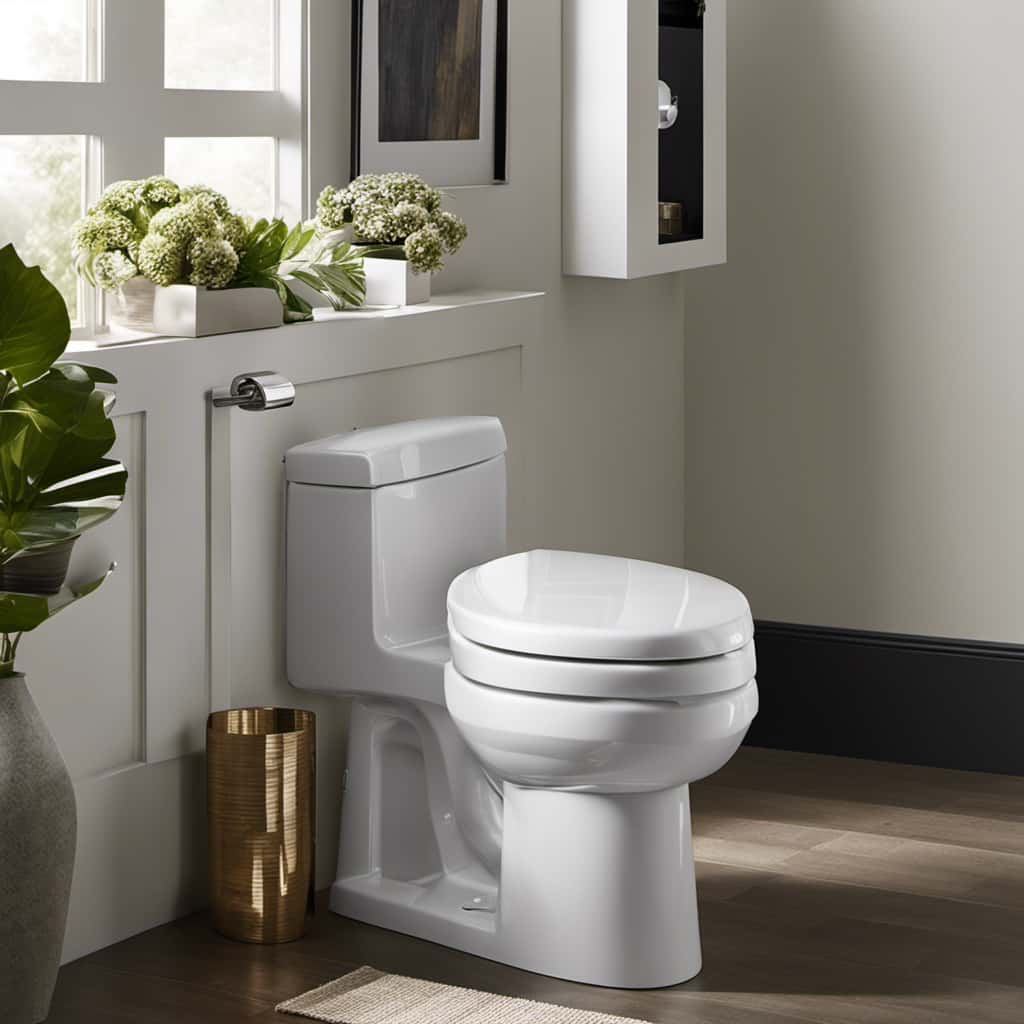
Rainwater: Eco-Friendly Flushing Solution
We can effectively utilize rainwater as an eco-friendly flushing solution. By implementing rainwater harvesting systems, we can collect and store rainwater for various purposes, including toilet flushing.
Here are three reasons why rainwater is an ideal choice for flushing:
- Sustainability: Rainwater is a renewable resource that can be collected and used repeatedly. By utilizing rainwater for flushing, we reduce the demand for freshwater sources, thereby conserving water and promoting sustainability.
- Cost-effectiveness: Implementing rainwater harvesting systems can significantly reduce water bills by providing an alternative water source for flushing. This cost-saving measure can be particularly beneficial for large households or commercial buildings with high water consumption.
- Greywater recycling: Rainwater can be combined with greywater, which is wastewater from sinks, showers, and laundry, to create a more efficient flushing solution. By recycling greywater and combining it with rainwater, we can maximize water usage and minimize water wastage.
Alternative to Plumbing
An alternative to plumbing is utilizing rainwater for flushing toilets. When it comes to alternative plumbing methods and off-grid sanitation solutions, rainwater harvesting can be an efficient and eco-friendly option.
By collecting rainwater from rooftops and storing it in tanks or cisterns, you can have a readily available water source for flushing toilets without relying on traditional plumbing systems. This method not only reduces the strain on municipal water supplies but also helps in conserving water. However, it’s important to note that rainwater harvesting for toilet flushing requires proper filtration and treatment to ensure the water is safe and free from contaminants.

Transitioning into the next section, another option to consider is installing a non-electric bidet attachment.
Install a Non-Electric Bidet Attachment
To install a non-electric bidet attachment, all we need is a simple yet effective solution. Here are three steps you can follow to install a bidet attachment without the need for electricity:
- Choose the right attachment: Look for a non-electric bidet attachment that’s compatible with your toilet. Consider factors such as water pressure control, self-cleaning nozzles, and adjustable spray patterns. These features will enhance your bidet experience and provide maximum comfort.
- Prepare the installation: Turn off the water supply to your toilet and flush it to remove any remaining water in the tank. Disconnect the water supply hose from the bottom of the tank and attach the bidet attachment to the fill valve. Ensure a secure connection and use Teflon tape for added leak protection.
- Adjust and test: Once the attachment is securely in place, adjust the water pressure to your desired level. Test the bidet by turning on the water supply and activating the spray function. Make sure there are no leaks and that the bidet is functioning properly.
Installing a non-electric bidet attachment is a straightforward process that can provide you with the many benefits of bidet hygiene without requiring electricity.
Use a Composting Toilet
Let’s continue our exploration of alternative toilet options by delving into the concept of using a composting toilet. A composting toilet is a waterless and portable composting system that converts human waste into compost through a natural decomposition process. It eliminates the need for water and sewage infrastructure, making it an eco-friendly and sustainable solution.
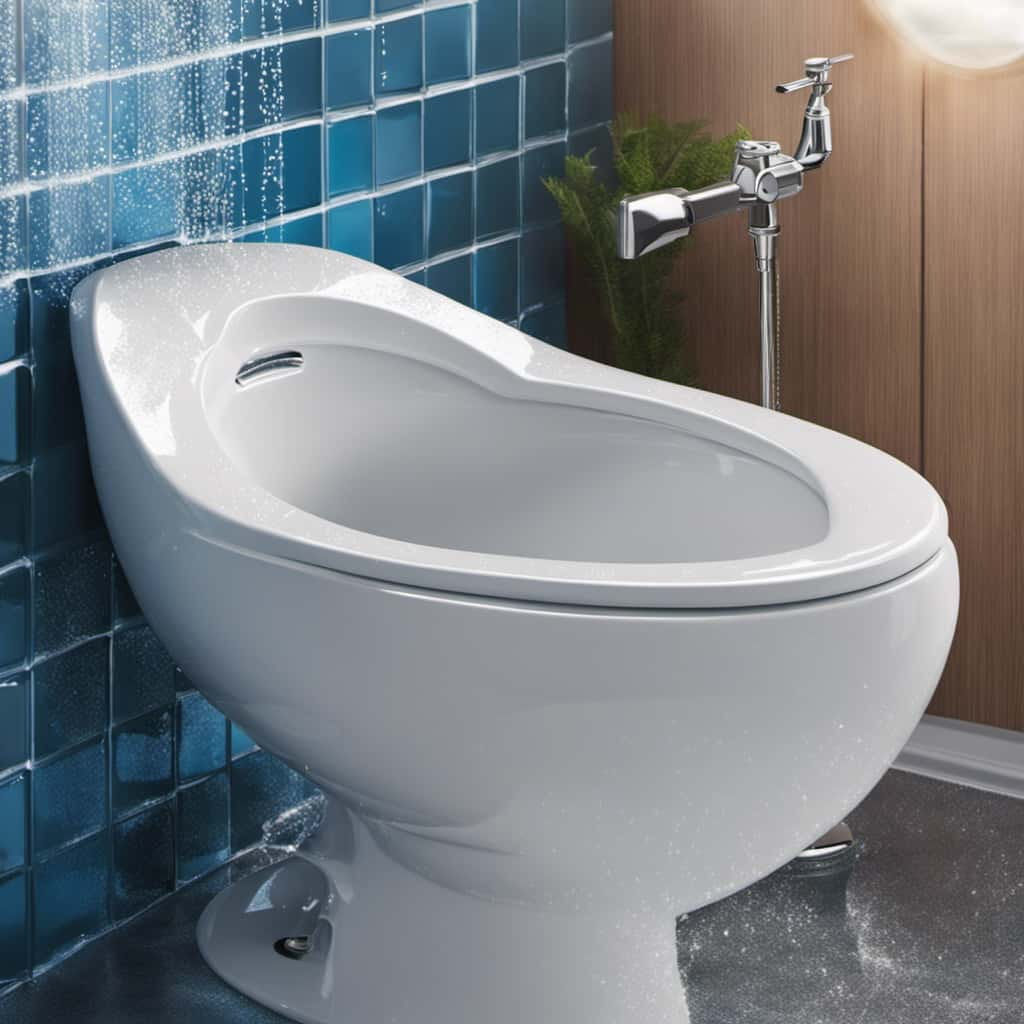
These toilets are designed with a separation system that separates liquid and solid waste. The solid waste is mixed with organic materials, such as sawdust or coconut coir, to aid in the decomposition process. The mixture is then left to decompose over time, resulting in nutrient-rich compost that can be safely used as fertilizer.
Composting toilets are a practical choice for off-grid living, camping, or areas with limited access to water and traditional sanitation systems.
Consider a Portable Camping Toilet
Let’s explore an alternative toilet option for power-free sanitation solutions: the portable camping toilet.
This portable toilet is designed for outdoor use and can be easily transported and set up in various locations. It typically consists of a seat, a waste container, and a flush mechanism that uses water or chemicals to control odor and facilitate waste disposal.

Portable camping toilets are a practical solution for situations where access to traditional flushing toilets is limited or nonexistent.
Alternative Toilet Options
One option we can consider is using a portable camping toilet as an alternative when we can’t flush the toilet due to a power outage. These toilets are designed to provide a convenient and hygienic solution in situations where traditional flushing toilets aren’t available.
Here are three reasons why portable camping toilets can be a great alternative:
- Water-saving techniques: Portable camping toilets are designed to minimize water usage. They often feature a water-saving flush mechanism or use chemicals that break down waste, reducing the need for excessive water usage.
- Eco-friendly sanitation options: Many portable camping toilets are designed to be environmentally friendly. They use biodegradable chemicals to break down waste, ensuring that it can be safely disposed of without harming the environment.
- Convenience and portability: Portable camping toilets are lightweight and easy to transport, making them a practical option for emergencies or outdoor activities. They can be set up quickly and provide a convenient and sanitary alternative when traditional flushing toilets aren’t available.
Power-Free Sanitation Solutions
As we continue our discussion on alternative toilet options, let’s explore power-free sanitation solutions, specifically the consideration of a portable camping toilet.

When faced with a power outage or lack of access to a traditional flushing toilet, a portable camping toilet can provide a practical and environmentally friendly solution for waste management. These toilets are designed to be self-contained and compact, making them convenient for use in various settings such as camping trips or emergency situations.
They typically consist of a waste storage tank, a seat, and a flushing mechanism that doesn’t require electricity. Some models even incorporate biodegradable bags or composting systems to further minimize environmental impact.
Portable camping toilets offer a power-free option for maintaining proper sanitation without compromising comfort and convenience.
Install a Manual Flush Valve
To install a manual flush valve, we need a wrench and a new valve. Here are the steps to follow:

- Turn off the water supply: Locate the shut-off valve behind the toilet and turn it clockwise to shut off the water supply. This step is crucial to avoid any water leakage during the installation process.
- Remove the old flush valve: Use the wrench to loosen the nuts connecting the old flush valve to the toilet tank. Carefully remove the old valve and discard it.
- Install the new flush valve: Take the new valve and insert it into the toilet tank, aligning it with the pre-existing holes. Secure it in place by tightening the nuts with the wrench.
Use a Septic System With Gravity Flow
We can use a septic system with gravity flow to flush the toilet without power.
A septic system is a wastewater treatment system commonly used in areas not connected to a municipal sewer system. It consists of a septic tank, where solid waste settles and is partially decomposed by bacteria, and a drainfield, where the liquid waste is released into the ground for further treatment.
Gravity flow is a key component of this system, as it allows the wastewater to flow naturally from the tank to the drainfield without the need for pumps or power. In the event of a power outage, the septic system can still function, ensuring that toilets can be flushed.
To maximize the efficiency of the septic system, rainwater harvesting and greywater recycling systems can be implemented to reduce the amount of water entering the septic tank and minimize the strain on the system.

Utilize a Chemical Toilet or Portable Potty
Let’s explore using a chemical toilet or portable potty to flush the toilet without power. These options provide a convenient and efficient solution during times of power outage or when traditional flushing methods aren’t available.
Here are three reasons why waterless composting and chemical-free portable toilets are excellent alternatives:
- Environmentally friendly: Waterless composting toilets use natural processes to break down waste into compost, reducing water usage and the need for chemical additives. This eco-friendly approach helps preserve precious water resources and eliminates the need for harmful chemicals.
- Odor control: These toilets are designed with innovative technologies to minimize odors. They often feature ventilation systems that remove unpleasant smells, ensuring a more pleasant and comfortable experience.
- Portability and versatility: Chemical-free portable toilets are lightweight and easy to transport, making them ideal for camping, RV trips, or emergency situations. They can be used in a variety of settings, providing a convenient and sanitary solution wherever you may need it.
Install a Waterless Urinal
During a power outage, our toilets can still be functional by installing a waterless urinal. Waterless urinals are alternative sanitation methods that offer a sustainable solution for water saving bathroom fixtures. These urinals work by utilizing a special cartridge that traps the urine while allowing the liquid to pass through. The cartridge contains a sealant that prevents odors from escaping and bacteria from growing. This innovative design eliminates the need for water to flush, making it an environmentally friendly option. By installing waterless urinals in our bathrooms, we can reduce water consumption and conserve this precious resource.
Transitioning to waterless urinals is a step towards a more sustainable future. However, if a waterless urinal isn’t feasible or practical, we can consider a vacuum-assisted toilet system as an alternative option.

Consider a Vacuum-Assisted Toilet System
To ensure functionality during a power outage, one option to consider is installing a vacuum-assisted toilet system. This system operates on a lower water pressure compared to traditional gravity-fed toilets, making it more efficient in conserving water.
Here are three key advantages of using a vacuum-assisted toilet system:
- Improved flushing power: The vacuum-assisted system utilizes air pressure to enhance the flushing action, resulting in a more powerful and effective flush. This ensures that waste is efficiently removed from the bowl, reducing the chances of clogs or blockages.
- Reduced maintenance requirements: Vacuum-assisted toilets are equipped with a smaller water tank, reducing the amount of water needed for each flush. This not only saves water but also reduces the frequency of tank refills and maintenance tasks such as valve replacements or flapper adjustments.
- Versatile installation options: Vacuum-assisted toilets can be installed in various locations, including basements or areas with limited water pressure. The system’s design allows for flexible installation, making it suitable for both residential and commercial settings.
Frequently Asked Questions
How Does a Gravity Flush System Work?
A gravity flush system relies on the force of gravity and water pressure to move waste through the pipes and out of the toilet. It doesn’t require power to operate, making it a reliable option.
What Are the Steps to Fill and Flush a Toilet With Water Manually?
To manually fill and flush a toilet with water, you can follow these steps: 1) Fill a bucket with water. 2) Pour the water swiftly into the toilet bowl. 3) Repeat until the desired flush is achieved.

How Can I Effectively Utilize Rainwater for Flushing the Toilet?
To effectively utilize rainwater for flushing the toilet, we can implement rainwater collection systems. These systems capture and store rainwater, which can then be used to conserve toilet water when power is unavailable.
What Are the Benefits of Installing a Non-Electric Bidet Attachment?
Installing a non-electric bidet attachment has pros and cons. It provides a hygienic and comfortable experience, but alternatives like wet wipes can be used for personal hygiene.
How Does a Composting Toilet Work and Is It Suitable for Everyday Use?
Using a composting toilet has many benefits, such as saving water and reducing waste. To maintain it, you need to regularly add sawdust or other organic matter. It’s an eco-friendly option for everyday use.
Conclusion
In conclusion, when faced with a power outage, there are several options available for flushing a toilet without electricity.

From utilizing gravity flush systems and manually filling and flushing with water, to using buckets or rainwater, there are practical solutions to maintain sanitation.
Additionally, installing non-electric bidet attachments, utilizing septic systems with gravity flow, or opting for chemical toilets or portable potties can provide alternative flushing methods.
Lastly, waterless urinals and vacuum-assisted toilet systems offer sustainable options.
So, even when the power goes out, you can still keep things flowing smoothly.

With an impeccable eye for detail and a passion for bathroom-related, Ava leads our editorial team gracefully and precisely.
Under her guidance, Best Modern Toilet has flourished as the go-to resource for modern bathroom enthusiasts. In her free time, you might find Ava exploring antique shops and looking for vintage bathroom fixtures to add to her collection.
FAQ - Advanced Bathroom Queries
What Should You Not Flush in the Toilet
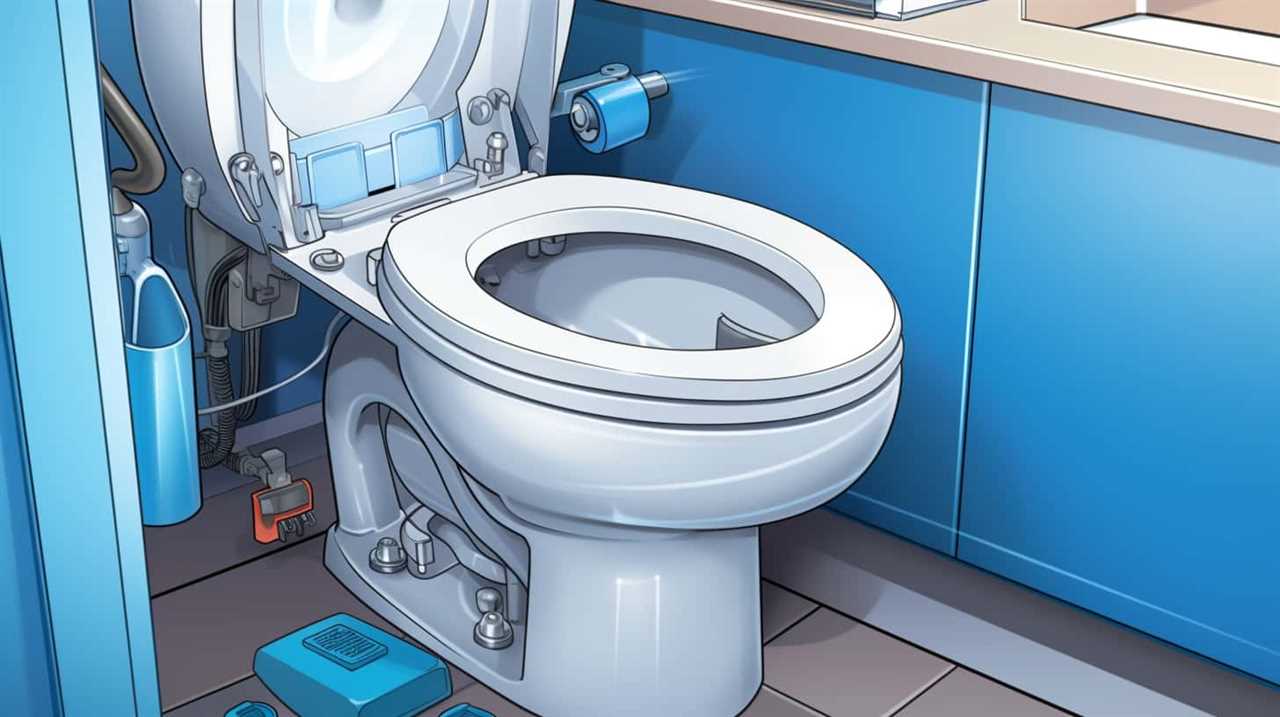
We are all aware that the toilet is a mysterious place where items vanish with a quick flush. However, it is important to remember, my friends, that not everything should be disposed of in this porcelain palace. Oh no.
In fact, there are some items that can cause serious damage to our plumbing and the environment.
So, let’s dive into the depths of toilet wisdom and find out exactly what we should not, I repeat, should not flush in the toilet.
Key Takeaways
- Non-biodegradable items such as plastic waste, disposable diapers, wrappers, bottles, and packaging should not be flushed as they can cause blockages in the sewage system and harm marine life.
- Personal hygiene products like tampons, pads, diapers, wipes, and condoms should not be flushed as they can lead to plumbing system blockages and backups.
- Medications and chemicals should not be flushed as they can contaminate water sources and harm aquatic life. They should be properly disposed of at local pharmacies or waste management facilities.
- Oils, grease, fat, paper towels, and wet wipes should not be flushed as they can cause plumbing system damage, contribute to pollution, and harm the environment. Proper disposal methods should be followed to prevent these issues.
Non-Biodegradable Items
When it comes to non-biodegradable items, we need to be mindful of what we flush down the toilet. Plastic waste and disposable diapers are two common examples that should never be flushed.

Plastic waste, such as wrappers, bottles, or packaging, can clog pipes and cause blockages in the sewage system. These items aren’t designed to break down in water and can lead to costly repairs.
Disposable diapers, although convenient, are made from materials that don’t biodegrade easily. Flushing them can lead to significant environmental problems, as they can end up in water bodies, harming marine life and polluting the ecosystem.
It’s crucial to dispose of these items properly in designated waste bins to prevent negative impacts on our plumbing systems and the environment as a whole.
Personal Hygiene Products
We should not flush personal hygiene products down the toilet. Flushing these products can cause blockages in the plumbing system, leading to costly repairs. Additionally, these products can have a detrimental impact on the environment. Proper disposal methods for personal hygiene products include throwing them in the trash or using designated disposal bins. It is important to remember that even if a product is labeled as "flushable," it does not mean it should be flushed. Flushing personal hygiene products can contribute to clogged sewer lines and sewage backups. To emphasize this point, consider the following table:
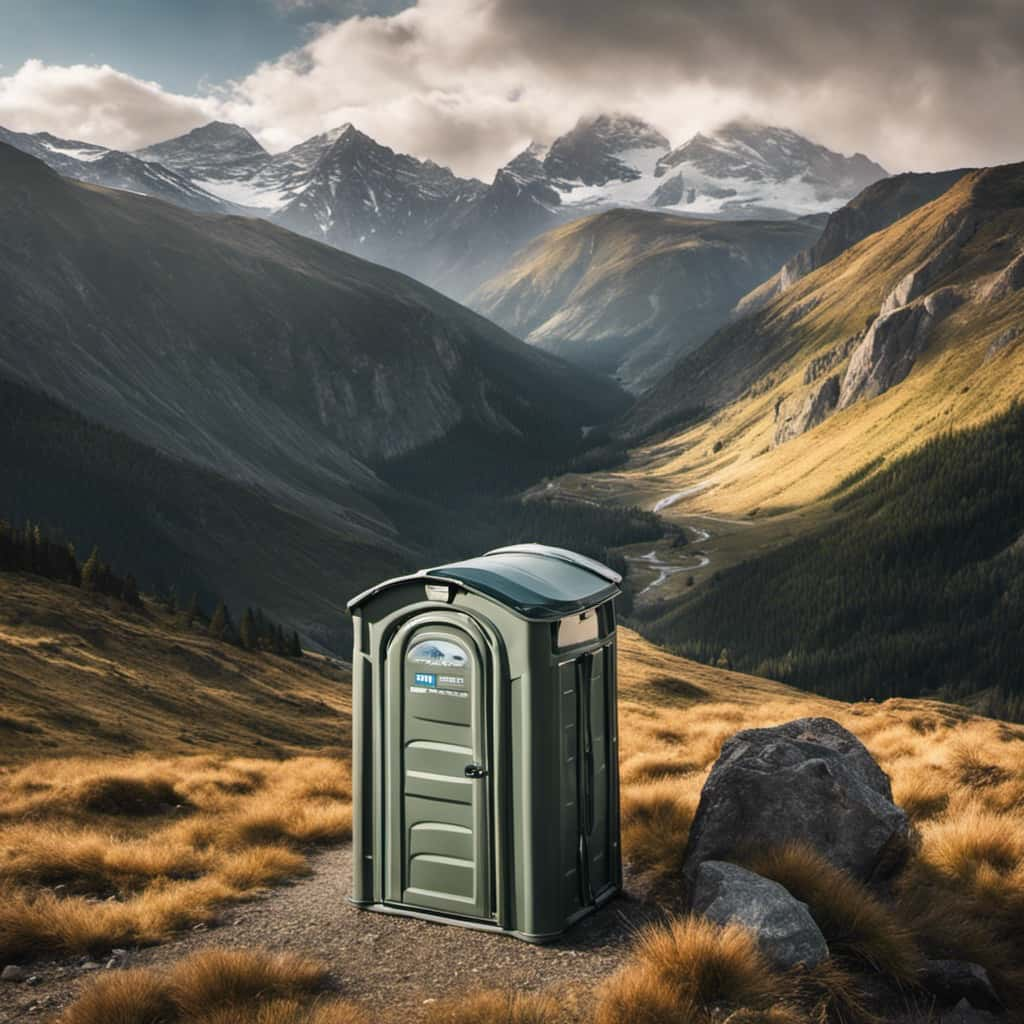
| Personal Hygiene Products |
|---|
| Tampons |
| Pads |
| Diapers |
| Wipes |
| Condoms |
Medications and Chemicals
In an article titled ‘What Should You Not Flush in the Toilet’, it’s important to address the issue of medications and chemicals that shouldn’t be flushed. Proper disposal of these substances is crucial to minimize their environmental impact and protect our water resources.
Here are three items that should never be flushed down the toilet:
- Medications: Flushing unused or expired medications can contaminate water sources, harming aquatic life and potentially affecting human health. Instead, take them to a local pharmacy or participating collection site for safe disposal.
- Household chemicals: Cleaning products, solvents, and pesticides should never be flushed as they can disrupt wastewater treatment processes and pollute rivers and lakes. Check with your local waste management facility for proper disposal methods.
- Personal care products containing chemicals: Items like tampons, diapers, and wet wipes shouldn’t be flushed, as they can cause blockages in sewer systems and contribute to pollution. Dispose of them in the trash instead.
Oils, Grease, and Fat
To prevent plumbing issues and protect the environment, it is important to properly dispose of oils, grease, and fat. These substances can cause significant damage to both your plumbing system and the environment when they are flushed down the toilet. When oils, grease, and fat enter the plumbing system, they can solidify and create blockages that can lead to costly repairs. Additionally, these substances can have a detrimental environmental impact when they enter sewage systems and waterways, causing pollution and harm to aquatic life. To help you understand the importance of proper disposal, here is a table outlining the environmental impact and potential plumbing problems caused by flushing oils, grease, and fat.
| Substance | Environmental Impact | Plumbing Problems |
|---|---|---|
| Oils | Can contaminate water sources and harm aquatic life | Clogs pipes and causes backups |
| Grease | Pollutes waterways and can be toxic to marine organisms | Solidifies in pipes and causes blockages |
| Fat | Contributes to water pollution and harms ecosystems | Accumulates in pipes and leads to sewer backups |
Paper Towels and Wet Wipes
Let’s talk about why flushing paper towels and wet wipes down the toilet is a bad idea. Not only does it have a negative environmental impact, but it can also cause serious plumbing issues.

Here are three reasons why you should never flush paper towels and wet wipes down the toilet:
- Environmental Impact: Flushing paper towels and wet wipes contributes to clogged sewer systems and can lead to sewage spills. These spills can contaminate our water sources and harm aquatic life. Additionally, these materials don’t break down like toilet paper, leading to increased waste in landfills.
- Plumbing Issues: Paper towels and wet wipes aren’t designed to dissolve in water like toilet paper. Flushing them down the toilet can clog pipes and cause blockages, leading to expensive repairs and potential damage to your plumbing system.
- Costly Consequences: Dealing with plumbing issues caused by flushing paper towels and wet wipes can be a costly affair. Not only will you need to hire a professional plumber to fix the problem, but you may also have to deal with water damage and the inconvenience of not having a functioning toilet.
To avoid these problems, dispose of paper towels and wet wipes in the trash instead of flushing them down the toilet.
Frequently Asked Questions
Can I Flush Non-Biodegradable Items Down the Toilet if They Are Small Enough?
We should never flush non-biodegradable items down the toilet, even if they are small. Doing so can cause potential plumbing issues such as clogs and blockages. It’s important to dispose of these items properly.
Why Can’t I Flush Personal Hygiene Products Down the Toilet?
Flushing personal hygiene products can have a negative environmental impact. It’s important not to flush them because they can clog pipes and sewage systems. Instead, dispose of them in the trash to avoid potential problems.
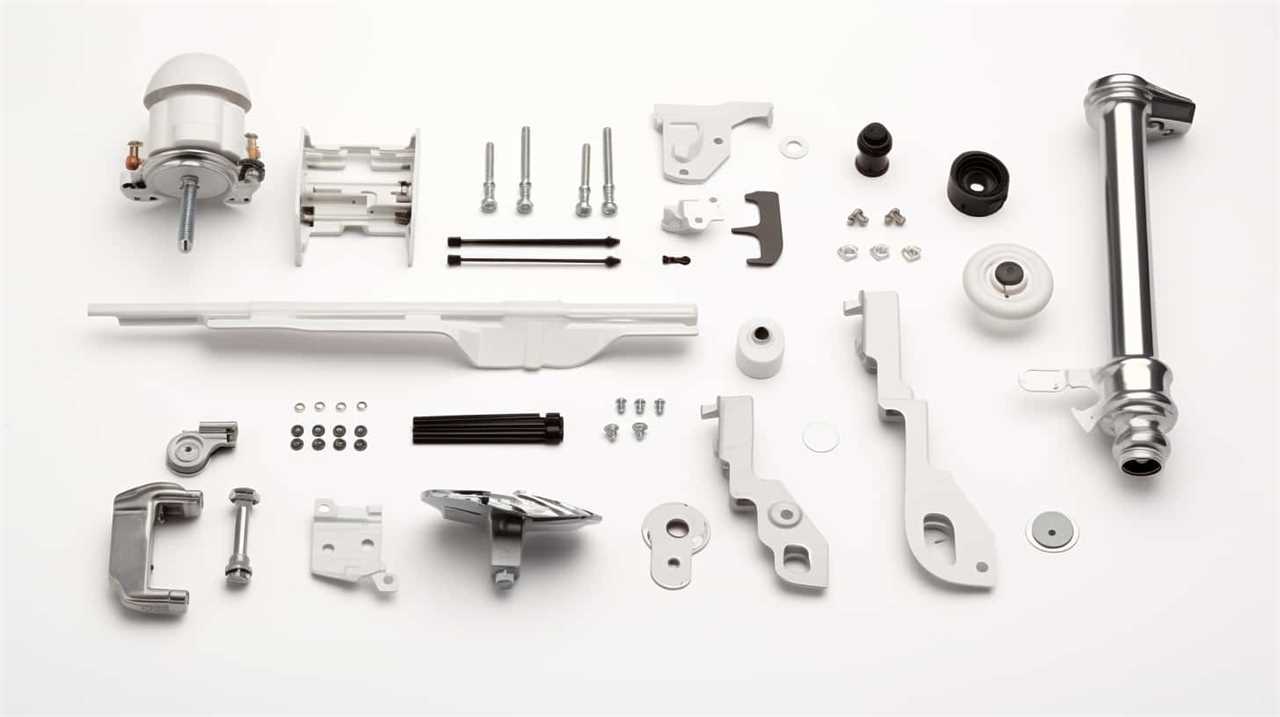
Is It Safe to Flush Medications and Chemicals Down the Toilet?
Flushing expired medications and chemicals down the toilet is not safe. Proper disposal is essential to protect both our environment and our health. Let’s explore the correct ways to dispose of these items.
Can Small Amounts of Oil, Grease, or Fat Be Safely Flushed Down the Toilet?
Flushing oils and chemicals can have a negative impact on the environment and sewage systems. It is important to avoid flushing non-biodegradable items to prevent clogs and contamination.
What Is the Difference Between Flushing Paper Towels and Wet Wipes and Flushing Toilet Paper?
Flushing paper towels and wet wipes may seem similar to flushing toilet paper, but the difference lies in their environmental impact. Non-biodegradable items like these can clog pipes and harm marine life. It’s best to dispose of them properly.
Conclusion
In conclusion, when it comes to flushing items down the toilet, it’s crucial to remember that not everything is meant to go down the drain.

Non-biodegradable items, personal hygiene products, medications and chemicals, oils, grease, fat, and paper towels and wet wipes should never be flushed. These items can cause blockages in the plumbing system and harm the environment.
So, let’s be mindful of what we flush, and keep our toilets and our planet healthy and happy.
With an impeccable eye for detail and a passion for bathroom-related, Ava leads our editorial team gracefully and precisely.
Under her guidance, Best Modern Toilet has flourished as the go-to resource for modern bathroom enthusiasts. In her free time, you might find Ava exploring antique shops and looking for vintage bathroom fixtures to add to her collection.
FAQ - Advanced Bathroom Queries
What Happens if You Flush the Toilet When the Water Softener Is Regenerating
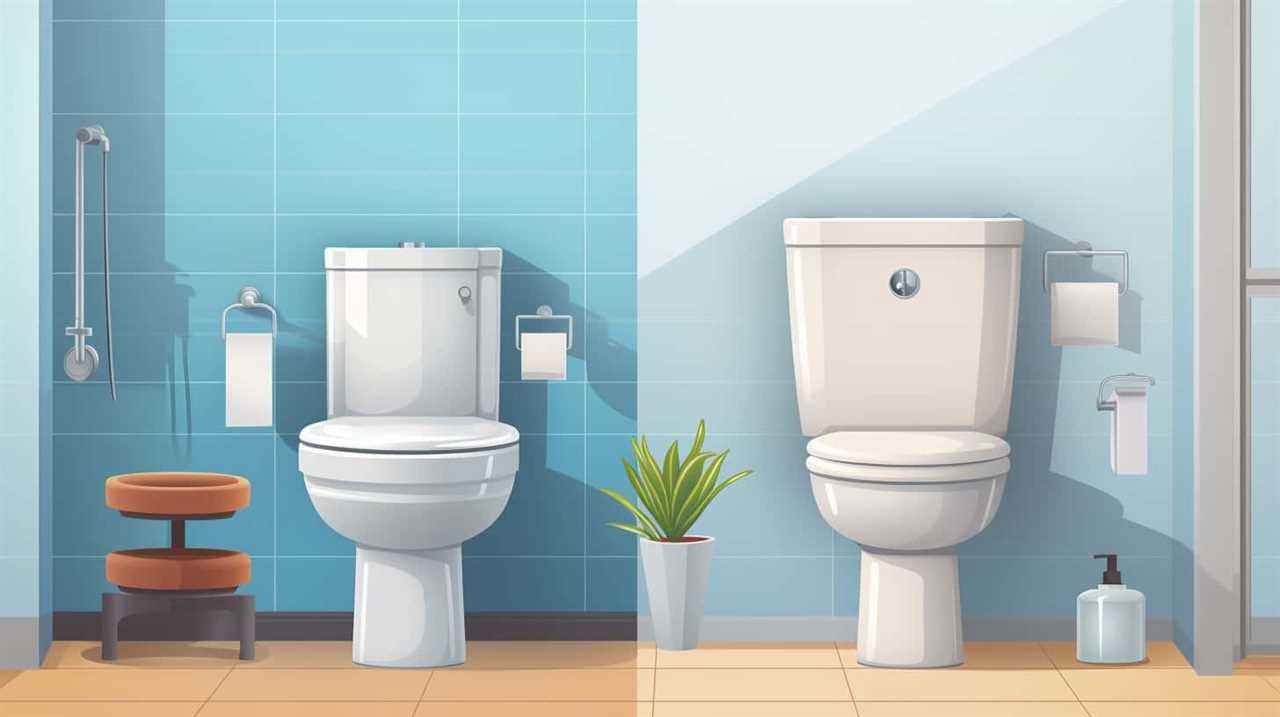
As water softening aficionados, we understand the significance of regular upkeep. But what occurs if we inadvertently flush the toilet while the water softener is regenerating?
Well, let us dive into the technicalities. Flushing the toilet during regeneration can lead to potential damage to the water softener system, reduced effectiveness of water softening, increased water hardness in the plumbing system, risk of clogging or backup, and an extended regeneration process with unnecessary water waste.
It’s vital to understand the consequences and avoid such missteps to ensure a mastery over water softening.
Key Takeaways
- Flushing the toilet during regeneration can cause potential damage to the water softener system.
- Water usage during regeneration reduces the effectiveness of water softening.
- Flushing the toilet during regeneration increases water hardness in the plumbing system.
- Flushing the toilet during regeneration poses a risk of clogging or backup in the plumbing.
Potential Damage to the Water Softener System
When flushing the toilet while the water softener is regenerating, potential damage to the water softener system can occur. This is because the regenerating process involves flushing out the accumulated minerals from the resin tank and replenishing it with fresh salt. Interrupting this process by flushing the toilet can disrupt the delicate balance and cause a potential system malfunction.

The impact on water quality can also be significant. The minerals that were meant to be removed during regeneration mightn’t be fully eliminated, leading to hard water issues. Additionally, the interruption can cause the system to overwork, potentially leading to excessive wear and tear on its components.
To avoid potential damage to the water softener system, it’s advisable to refrain from flushing the toilet during the regeneration process.
Reduced Effectiveness of Water Softening
How does flushing the toilet during water softener regeneration impact the effectiveness of water softening?
When the water softener is regenerating, it’s crucial to avoid using water in order to ensure optimal performance. Flushing the toilet during this process can lead to reduced effectiveness of water softening.

This is because the regeneration process involves flushing out the accumulated minerals and replacing them with new sodium ions. However, when water is used during this time, it disrupts the regeneration process, leading to incomplete removal of minerals from the resin bed.
As a result, the water may still contain hardness minerals, resulting in decreased soap lathering and increased scale buildup. Therefore, it’s important to avoid using water, including flushing the toilet, during the water softener regeneration process to maintain the effectiveness of water softening.
Increased Water Hardness in the Plumbing System
Flushing the toilet during water softener regeneration can result in an elevation of water hardness in the plumbing system. When the water softener is regenerating, it is temporarily unable to remove the minerals that cause water hardness. As a result, these minerals can enter the plumbing system and increase the water hardness. This can have several potential solutions, such as installing a bypass valve to divert water away from the water softener during regeneration. Additionally, it is important to consider the impact on appliances. Increased water hardness can lead to mineral buildup in appliances, reducing their efficiency and lifespan. Regular maintenance and descaling of appliances, such as dishwashers and washing machines, can help mitigate the effects of increased water hardness.
| Potential Solutions | Impact on Appliances |
|---|---|
| Install bypass valve | Mineral buildup |
| Divert water during regeneration | Reduced efficiency |
| Regular appliance maintenance | Decreased lifespan |
Risk of Clogging or Backup in the Plumbing
During water softener regeneration, there’s a risk of clogging or backup in the plumbing system. The water softener goes through a cleaning cycle where it flushes out accumulated minerals. This can cause a temporary increase in water flow and pressure. This increase in pressure can strain weak or damaged pipes, potentially causing leaks or bursts. The high water flow can also dislodge debris or sediment in the pipes, blocking the water flow. To minimize the risk, it’s important to avoid using water-dependent appliances during the regeneration process. Following the recommended maintenance schedule and ensuring proper installation and functioning of the system can help mitigate this risk.

Now, let’s move on to discussing the extended regeneration process and water waste.
Extended Regeneration Process and Water Waste
As we continue our discussion on the risks of clogging or backup in the plumbing system during water softener regeneration, let’s now explore the extended regeneration process and the issue of water waste.
During the extended regeneration process, the water softener goes through several cycles to clean and recharge the resin beads. This process typically takes a couple of hours to complete. However, it’s important to note that during this time, the water softener isn’t able to supply softened water to the household.
Additionally, the extended regeneration process can result in a significant amount of water waste. It’s estimated that for every regeneration cycle, approximately 50-100 gallons of water can be wasted. This not only impacts water bills but also raises concerns about the environmental impact and the overall efficiency of the water softener system.

Therefore, proper water softener maintenance and scheduling can help minimize the impact on water quality and reduce water waste.
Frequently Asked Questions
Can Flushing the Toilet During the Water Softener Regeneration Process Cause Any Harm to the Toilet Itself?
Flushing the toilet during water softener regeneration can potentially cause toilet damage. It is advised to avoid doing so to ensure water softener efficiency and prevent any potential harm to the toilet.
Will the Water Softener Still Work Effectively After Flushing the Toilet During Regeneration?
After flushing the toilet during water softener regeneration, the effectiveness of the softener may be compromised. This can lead to a decrease in water pressure and a potential impact on water quality.
Is There a Risk of Increased Water Hardness in Other Household Appliances, Such as the Dishwasher or Washing Machine, if the Toilet Is Flushed During Regeneration?
Flushing the toilet during water softener regeneration may affect water pressure and potentially shorten the lifespan of the water softener. Increased water hardness in appliances like the dishwasher or washing machine is possible.

Can Flushing the Toilet During Regeneration Lead to Clogging or Backup in Other Areas of the Plumbing System, Such as Sinks or Showers?
When the toilet is flushed during water softener regeneration, it can potentially cause clogging or backup in other areas of the plumbing system, such as sinks or showers. It’s important to prevent this to maintain proper water pressure.
Does Flushing the Toilet During the Regeneration Process Extend the Overall Length of the Regeneration and Result in More Water Waste?
Flushing the toilet during water softener regeneration can impact water pressure. It may result in potential damage to the water softener and increase the length of regeneration, leading to more water waste.
Conclusion
If you flush the toilet during the water softener regeneration process, you could potentially cause damage to the system. This can reduce the effectiveness of water softening and increase water hardness in your plumbing system. Additionally, flushing the toilet during regeneration can risk clogging or backup in your pipes. This can lead to costly repairs and inconvenience. Furthermore, flushing the toilet during regeneration can also result in wasting water. It’s important to be mindful of the regeneration schedule and avoid flushing the toilet during this time to maintain the optimal functioning of your water softener and prevent any potential issues.
With an impeccable eye for detail and a passion for bathroom-related, Ava leads our editorial team gracefully and precisely.
Under her guidance, Best Modern Toilet has flourished as the go-to resource for modern bathroom enthusiasts. In her free time, you might find Ava exploring antique shops and looking for vintage bathroom fixtures to add to her collection.
FAQ - Advanced Bathroom Queries
Where Can You Not Flush Toilet Paper

We’ve all experienced it – facing a toilet, pondering whether we should flush that bundle of toilet paper or not.
Well, here’s a surprising fact: in some places, you can’t flush it at all! From public restrooms to older plumbing systems, there are several situations where tossing that tissue down the drain is a big no-no.
In this article, we’ll explore where you can and can’t flush toilet paper, so you never find yourself in a messy situation again.
Key Takeaways
- Flushing toilet paper in public restrooms can have severe environmental impacts, clog pipes, and strain wastewater treatment facilities.
- Older plumbing systems may not be able to handle flushing toilet paper, leading to clogging and backups in the pipes.
- Many countries with inadequate sewage infrastructure cannot handle flushing toilet paper, leading to clogged pipes, sewage backups, and contaminated water sources.
- Flushing non-biodegradable items can cause blockages in septic systems and disrupt the natural balance of the tank, so it is important to use waste bins and properly dispose of hazardous materials.
Public Restrooms
In public restrooms, it’s important to remember that toilet paper shouldn’t be flushed in certain situations. Proper hygiene practices in public restrooms require us to dispose of toilet paper appropriately. Flushing toilet paper may seem convenient, but it can have severe environmental impacts.

When flushed, toilet paper can clog pipes and sewage systems, causing costly repairs and potential health hazards. Additionally, flushing toilet paper contributes to water pollution and strain on wastewater treatment facilities. By not flushing toilet paper in public restrooms, we can help conserve water, reduce maintenance costs, and protect the environment.
Instead, it’s recommended to use the provided waste bins for proper disposal. Let’s all be mindful of our actions and practice responsible hygiene practices in public restrooms for the benefit of ourselves and the environment.
Older Plumbing Systems
Our older plumbing systems may not be able to handle the flushing of toilet paper. This is due to their historical significance and the environmental impact it can have.
Many older buildings still have outdated plumbing systems that weren’t designed to handle the modern use of toilet paper. These systems were built at a time when people used alternative methods such as bidets or reusable cloths.

Flushing toilet paper in these older systems can lead to clogging and backups in the pipes, causing costly repairs and potential damage to the environment. It’s important to be aware of the limitations of these older plumbing systems and to dispose of toilet paper in the appropriate waste receptacles to prevent any issues.
Countries With Inadequate Sewage Infrastructure
Many countries around the world have inadequate sewage infrastructure that cannot handle the flushing of toilet paper. This poses significant challenges for hygiene practices and has a severe environmental impact. In countries where the sewage infrastructure is inadequate, flushing toilet paper can lead to clogged pipes, sewage backups, and contaminated water sources.
To illustrate the severity of the issue, let’s take a look at the table below, which highlights a few countries facing this problem:
| Country | Hygiene Practices Affected | Environmental Impact |
|---|---|---|
| Haiti | Limited access to clean water and sanitation facilities | Contamination of water sources and increased risk of diseases |
| India | Lack of proper sanitation facilities in rural areas | Pollution of rivers and groundwater |
| Cambodia | Insufficient sewage treatment plants | Water pollution and degradation of ecosystems |
It’s clear that the inadequate sewage infrastructure in these countries not only poses challenges to hygiene practices but also has a detrimental impact on the environment. Efforts should be made to improve and upgrade the sewage systems to ensure proper waste management and protect public health.
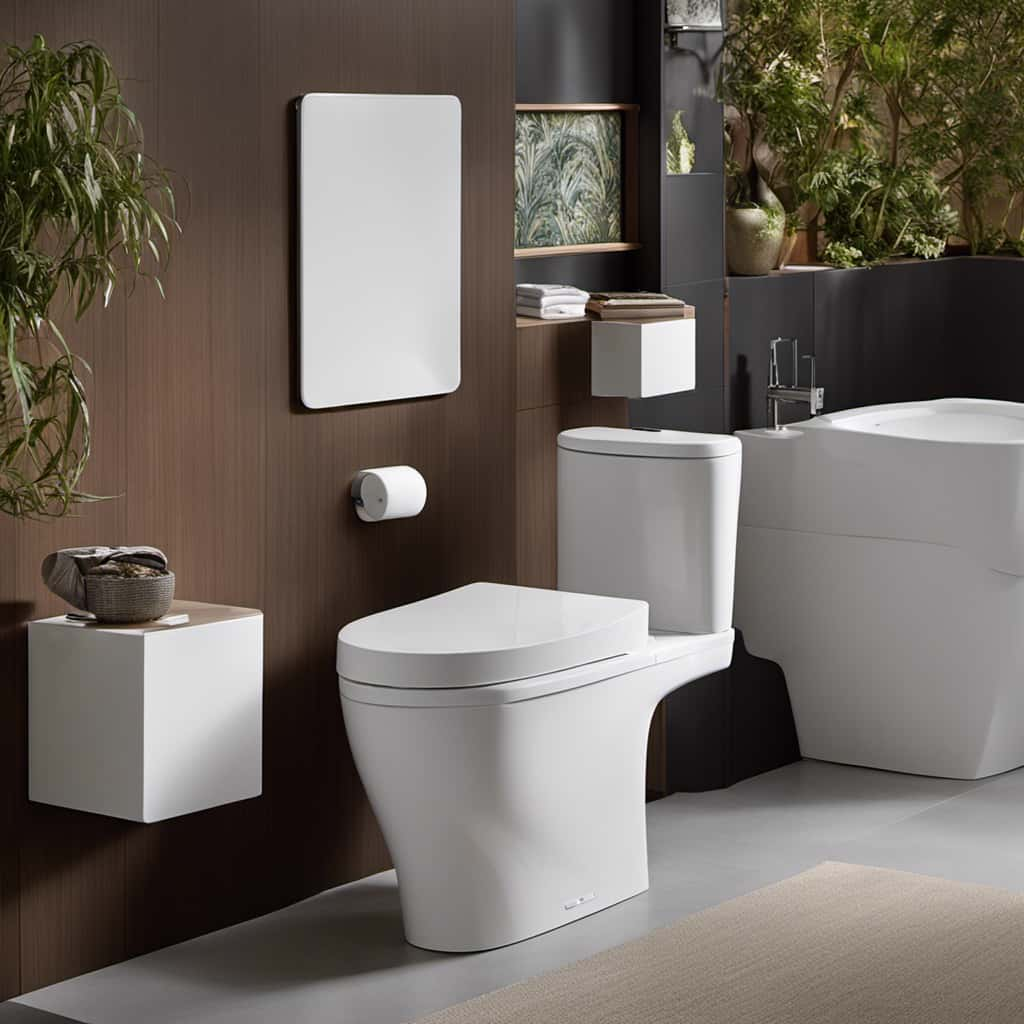
Portable Toilets
Moving forward from the discussion on countries with inadequate sewage infrastructure, let’s now explore the topic of portable toilets and their role in addressing the challenges related to proper waste management and hygiene practices.
Portable toilets play a crucial role in providing sanitation solutions in various situations. Here are four key points to consider:
- Temporary Events: Portable toilet rental is essential for outdoor events like concerts, festivals, and sports matches. They ensure that attendees have access to clean and convenient restroom facilities.
- Construction Sites: Portable toilets are commonly used on construction sites where permanent facilities are unavailable. They help maintain proper hygiene practices and ensure the well-being of workers.
- Disaster Relief: During natural disasters or emergencies, portable toilets are vital in providing immediate sanitation solutions in affected areas, preventing the spread of diseases.
- Outdoor Activities: Whether it’s camping, hiking, or boating, portable toilets are essential for maintaining cleanliness and hygiene in remote outdoor locations.
Septic Tanks
Let’s now delve into the topic of septic tanks and their role in addressing waste management and hygiene practices, particularly in relation to portable toilets.
Septic tanks play a crucial role in waste disposal and treatment, providing an efficient and eco-friendly solution for waste management. When it comes to portable toilets, septic tanks are often used to collect and store waste until it can be properly disposed of or treated.
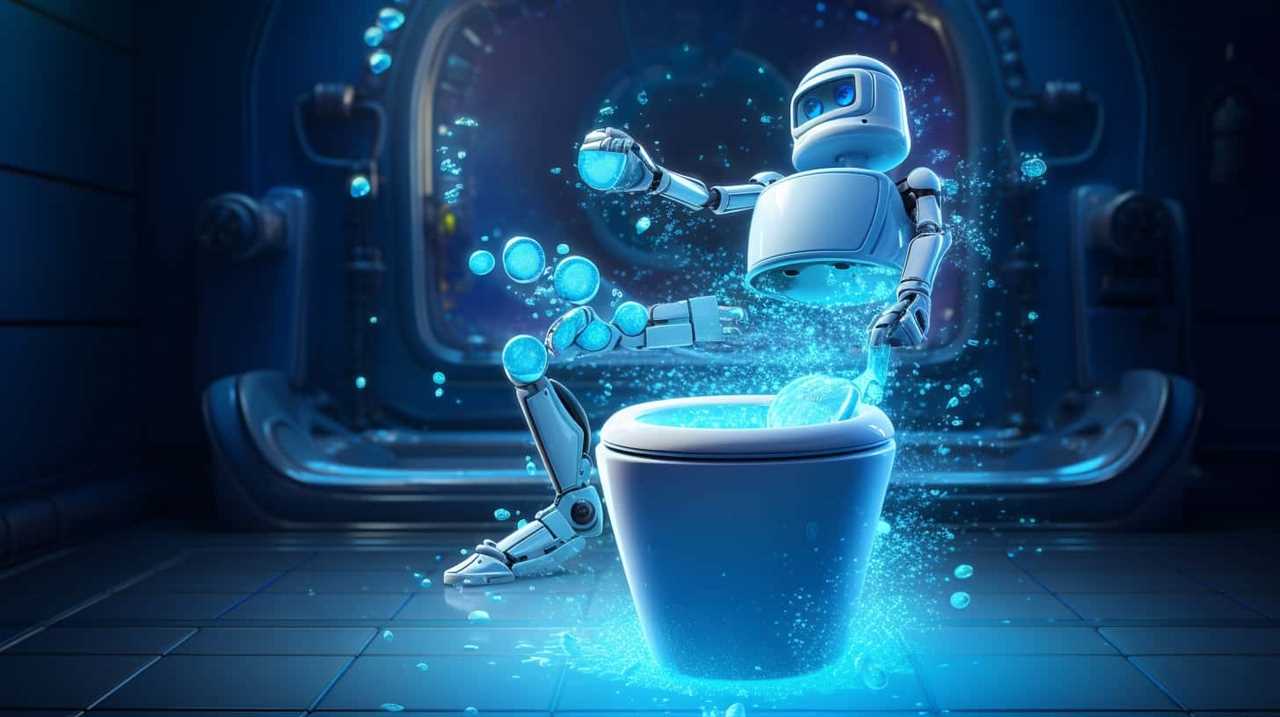
One of the key considerations with septic tanks is their environmental impact. Properly maintained septic tanks can minimize the release of harmful substances into the environment, protecting both human health and ecosystems.
Maintenance requirements for septic tanks include regular pumping, inspection, and proper use of additives to promote the breakdown of organic waste. By adhering to these maintenance practices, septic tanks can effectively manage waste and maintain a healthy environment.
Frequently Asked Questions
How Often Should Public Restrooms Be Cleaned to Ensure Proper Hygiene and Prevent the Spread of Diseases?
We clean public restrooms frequently to maintain proper hygiene and prevent the spread of diseases. Our disease prevention measures include regular cleaning, disinfecting surfaces, and ensuring adequate supply of soap and hand sanitizers.
What Are Some Alternative Options for Disposing of Toilet Paper in Areas With Older Plumbing Systems?
In areas with older plumbing systems, waste disposal can be a challenge. However, there are environmentally friendly alternatives to flushing toilet paper. Let’s explore some options for proper disposal that won’t harm the plumbing.
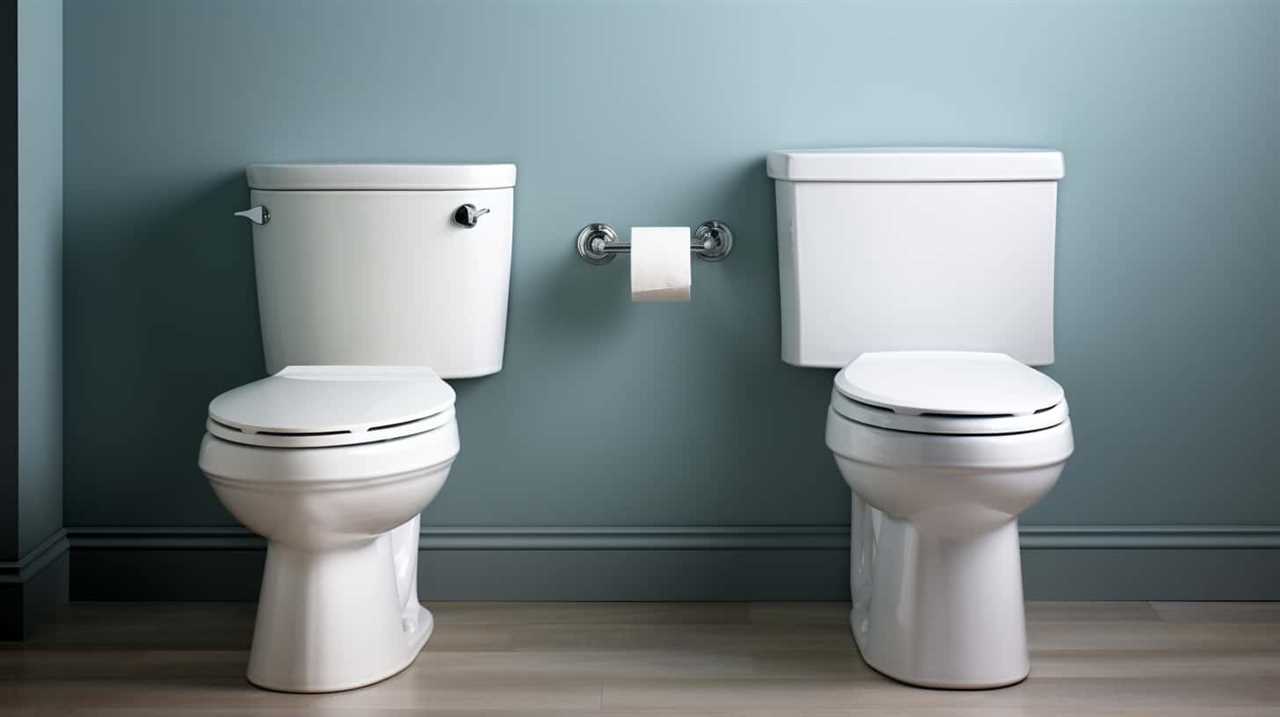
Can You Provide a List of Countries With the Most Advanced Sewage Infrastructure?
A list of countries with the most advanced sewage infrastructure includes Japan, Germany, and Singapore. These countries have invested in modern technology to efficiently manage wastewater. Bidets are another alternative to toilet paper, with benefits like improved hygiene and reduced environmental waste.
How Are Portable Toilets Emptied and Maintained to Ensure Proper Sanitation?
When it comes to portable toilet maintenance, ensuring proper disposal of waste is crucial. We take the responsibility seriously, employing strict protocols to empty and maintain portable toilets, guaranteeing optimal sanitation for everyone.
What Are the Common Problems That Can Occur With Septic Tanks and How Can They Be Prevented or Resolved?
Common septic tank problems include blockages, leaks, and overflows. Regular septic tank maintenance, such as pumping and inspecting, can help prevent these issues. It’s important to follow proper waste disposal guidelines to avoid further complications.
Conclusion
In conclusion, while it may seem strange to some, there are various places where flushing toilet paper isn’t advisable. Public restrooms, older plumbing systems, countries with inadequate sewage infrastructure, portable toilets, and septic tanks all fall into this category.
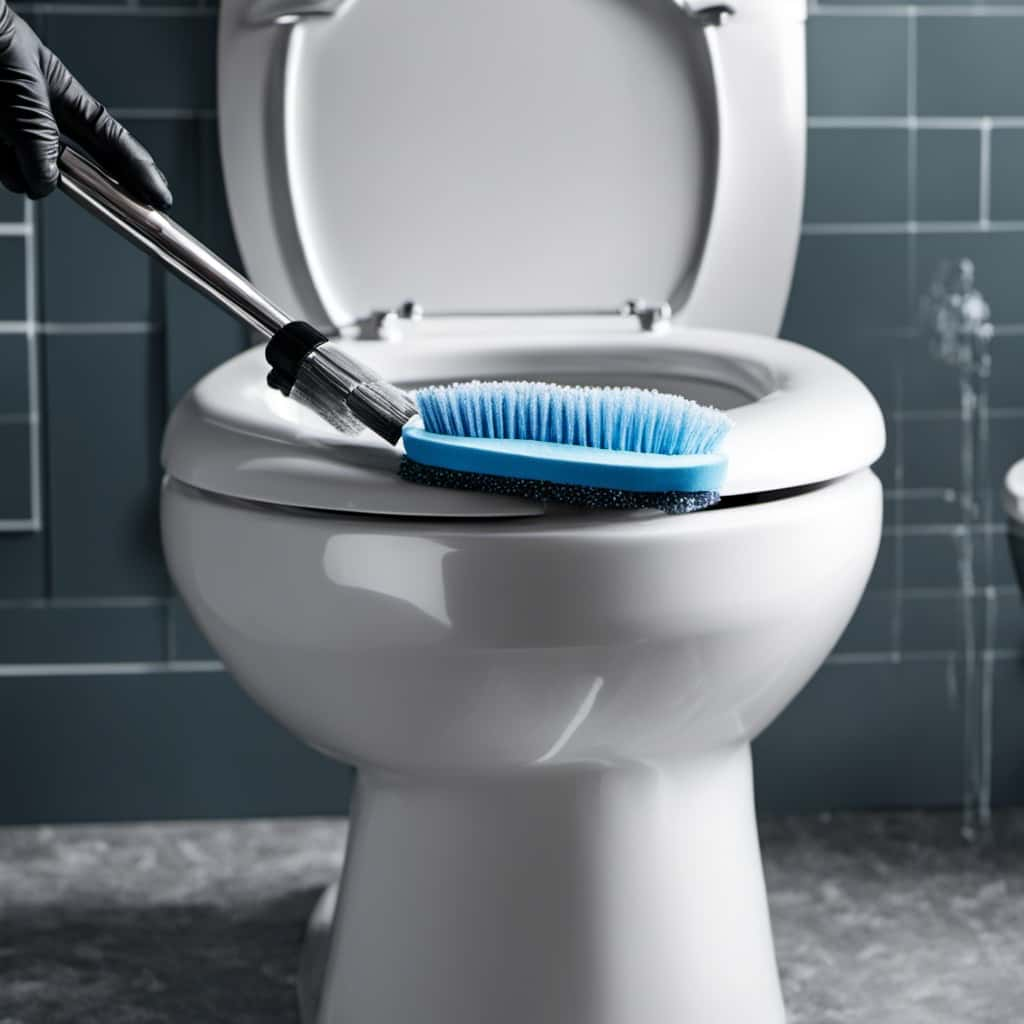
It’s crucial to be mindful of these restrictions to prevent clogging and damage to the plumbing systems. So next time you find yourself in one of these situations, remember to dispose of your toilet paper properly and help keep the pipes flowing smoothly.
With an impeccable eye for detail and a passion for bathroom-related, Ava leads our editorial team gracefully and precisely.
Under her guidance, Best Modern Toilet has flourished as the go-to resource for modern bathroom enthusiasts. In her free time, you might find Ava exploring antique shops and looking for vintage bathroom fixtures to add to her collection.
-

 Bathroom Enhancements2 months ago
Bathroom Enhancements2 months agoWill Hot Bath Lower Blood Pressure
-

 FAQ - Advanced Bathroom Queries3 months ago
FAQ - Advanced Bathroom Queries3 months agoWhich Countries Use Bidets the Most
-

 Reviews1 month ago
Reviews1 month agoLDian Smart Toilet Review [2024]
-

 Reviews2 months ago
Reviews2 months agoKohler Innate Smart Toilet Review [2024]
-

 Reviews2 months ago
Reviews2 months agoKohler NUMI 2.0 Smart Toilet Review [2024]
-

 Reviews2 months ago
Reviews2 months agoCANEST Smart Toilet Review: The Ultimate Bathroom Upgrade [2024]
-

 Toilet Types3 months ago
Toilet Types3 months agoAre Bleach Tablets Bad for Your Toilet
-

 Reviews2 months ago
Reviews2 months agoWoodbridge B0970S Smart Bidet Toilet Review [2024]






















